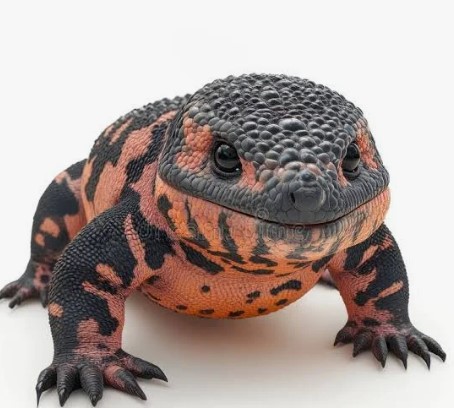
Halloween is coming! Let’s talk about monsters.
Everyone’s heard about the amazing new GLP-1 weight loss drugs Ozempic, Wegovy, Mounjaro and others. But did you know there’s a monster involved?
Before we go further, a little refresher is needed. These drugs were initially approved for management of type 2 diabetes, and became immensely popular once it was realized they also promoted weight loss. Type 2 diabetes is a deficiency in insulin, the hormone that regulates our blood sugar. Insulin is normally made in the beta cells of the pancreas. The production and release of insulin is a complex finely tuned mechanism, so our bodies make more when we need it (after meals, for example) and less when we don’t. GLP-1, (glucagon-like peptide-1) is a hormone released from the human digestive tract that helps to regulate insulin production. In some people, the pancreas doesn’t make enough insulin, so blood sugar is not well-regulated and becomes elevated. Common risk factors for developing type 2 diabetes include obesity, inactivity, stress, age, and sugary diets. About 9.3% of American adults (over 29 million people) have type 2 diabetes. You can see why it is a hot bed of research.
Why are Gila monsters linked to GLP-1s?
The Gila Monster is the United States’ largest and only native venomous lizard. Shy desert dwellers, these large, slow-moving lizards can grow up to two feet long and weigh over five pounds. They spend most of the time in burrows underground, and eat bird eggs, small mammals, and other lizards. Three to four meals in the spring can last them the whole season. They have a fearsome reputation, because they have a venomous bite, and once they bite, they don’t like to let go. A Gila monster bite causes excruciating pain, edema, and weakness associated with a rapid drop in blood pressure. These bites make the victim quite sick but only rarely lead to death. In fact, YouTuber personality Coyote Peterson, who has risen to notoriety with a series of videos in which he allows himself to be stung or bitten by venomous animals (!) says a Gila monster bite is “like hot lava coursing through your veins”. (https://www.youtube.com/watch?v=swlozUKuvFI ) (As an aside, I’d hate to be Coyote’s mom; I bet she worries a lot!)
Gila monster venom, like most venoms, is a cocktail of hundreds of components, each one chemically unique and with different effects. Scientists have been studying venoms of many animals for years, breaking them down into individual components, looking for chemicals that will benefit humans.
NIH research from over 40 years ago showed that venom from certain snakes and lizards, including the Gila monster, caused enlargement of the pancreas, (where insulin is synthesized), perhaps overstimulating the pancreas. In 1990, Dr. John Eng, an endocrinologist/researcher at the Veterans’ Administration Medical Center in the Bronx, studied the Gila monster venom and discovered a peptide he called exendin that triggers synthesis and release of insulin from the pancreas. To his surprise, Dr. Eng found that exendin-4 was similar in both structure and function to GLP-1. The significant difference was that GLP-1 remained active in the body for about 2 minutes, but exendin-4 remained active for hours, suggesting that it could be a long-acting, effective diabetes treatment.
Following this, Dr Josephine Eagan, a researcher at the National Institute on Aging, began pre-clinical trials with extendin-4, on mice, and by 1999 proved it was safe and effective in controlling blood sugar. It received a patent in 2005, as a drug called Extenatide (Byetta), the very first GLP-1-mimicking drug for controlling Type 2 Diabetes.
Further research led to the development of second-generation GLP-1 drugs, including liraglutide (approved for type 2 diabetes in 2010 and obesity in 2014) and semaglutide (approved for type 2 diabetes in 2017 and obesity in 2021), which were designed with improved properties like longer duration of action. We now have a whole host of these drugs, like Wegovy, Ozempic, Mounjaro, Zepbound and others. All of them work on the same principle of mimicking the action of our own natural GLP-1, to stimulate prolonged insulin production, minimize hunger and improve blood sugar control. And oh-by the way, promote weight loss.
The good news for the Gila monster is that these GLP-1 agonist drugs, though based on the venom, are all synthetically developed, and not extracted directly from Gila monster venom. The Gila monsters are luckier than the Horseshoe crabs in this regard. (http://annfbeach.com/medicine/were-all-depending-on-the-horseshoe-crab/)
So, if you’re one of the 6% of American adults taking a GLP-1 drug, you have the lowly Gila monster to thank!
How fun it would have been to hear some of our professors talk about the Gila monster and pronounce some of these drug names.
HA I can still hear Dr Philp say (with his Scottish brogue) “Diphilobothrium latum”!
So I knew about the Gila monster connection to these drugs, Ann, but the parts I didn’t know were the details of the research done to go from venom to FDA-approved drug class. As usual, your article gives us readers a wonderful “behind the scenes” view of that process, and for those readers who are also doctors, a unique and interesting (and painless!) review of the pharmacology we learned in the dim past of the pre-clinical years! That separation of basic and clinical sciences, by the way, no longer exists in medical education, but that’s a whole other story for another day, Ann, right?
So glad you enjoyed it. Look for more behind the scenes pharmacology blogs! Ann
Fascinating! Another testament to the importance of the researchers at our national medical institutes!